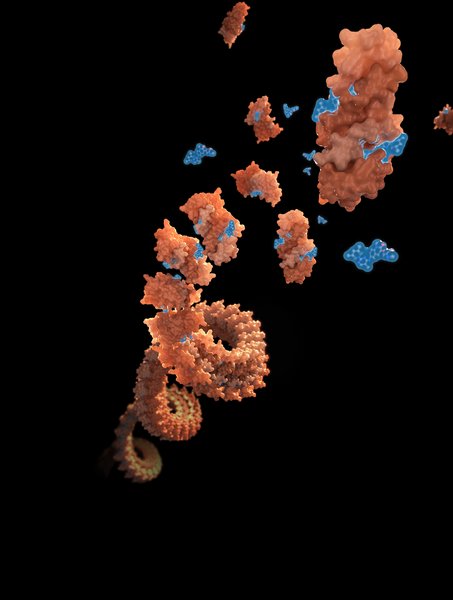New method for reversible oligomerization developed

A transatlantic group of researchers at the National Center for Tumor Diseases (NCT) Heidelberg, the German Cancer Research Center (DKFZ), the Broad Institute in Cambridge, USA, and the Dana-Farber Cancer Institute in Boston, USA, has developed a new, creative method for reversible oligomerization of proteins. The work is published in the latest issue of the journal Cell Reports Methods.
Oligomerization of proteins is a ubiquitous process in nature in which a structure - an oligomer - is built up from several structurally identical or similar units. In some proteins, special subunits - domains - are responsible for this; in the protein BCL6, for example, the BTB domain. The study now published shows for the first time that this oligomerization can be time- and concentration-dependent. This is useful, for example, to study more detailed biological processes in which protein oligomerization triggers a process. In addition, the researchers have engineered a modified epidermal growth factor (EGF) receptor and used it to introduce the BTB-BCL6 domain into proteins to make them grow independently of their ligand. In addition, the group was able to partially reverse oligomerization and receptor activation.
The first author of the paper is Lena Nitsch, on whose master's thesis the publication is based, and who conducted research in the group of Stefan Fröhling, executive director at the NCT Heidelberg and head of Translational Medical Oncology at DKFZ. The work on reversible oligomerization was at the same time the result of an intensive transatlantic collaboration. Lena Nitsch was at the Broad Institute and the Dana-Farber Cancer Center for a research stay with Mikolaj Slabicki. And - before COVID-19 restricted travel and exchanges had to be done online - they worked together in Stefan Fröhling's lab. In addition, they were supported by scientists from the Dana-Farber Cancer Institute, especially for the in vitro experiments.
Illustration: Falconieri Visuals







